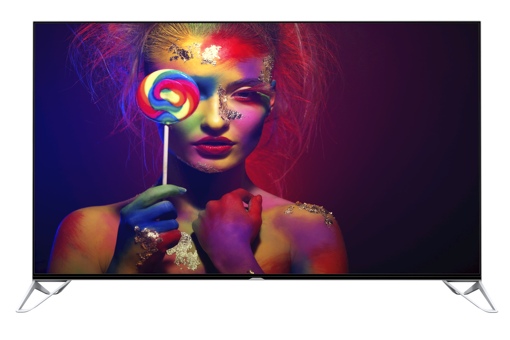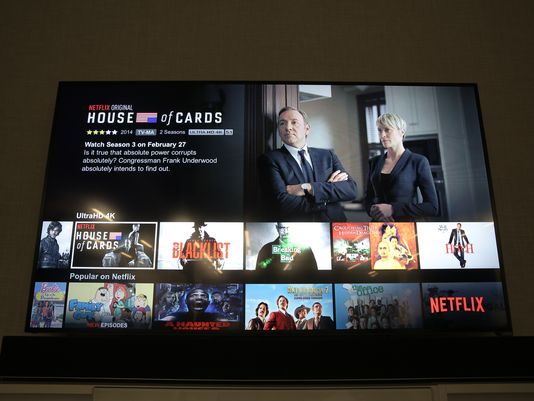 Now that CES 2015 is wrapping up, it is worthwhile taking a step back and see where the various TV makers are headed in 2015. Although 4K Ultra HD is the main theme, each manufacturer seems to have taken quite a different spin on how they are delivering 4K. And there are many more new buzzwords and new technologies to figure out. Here is a summary of what happened at CES with TVs.
Now that CES 2015 is wrapping up, it is worthwhile taking a step back and see where the various TV makers are headed in 2015. Although 4K Ultra HD is the main theme, each manufacturer seems to have taken quite a different spin on how they are delivering 4K. And there are many more new buzzwords and new technologies to figure out. Here is a summary of what happened at CES with TVs.
Smart TV
Samsung has declared that within the next couple of years every TV it sells will be Internet enabled so the term Smart TV will go away: it will just be the norm. Most TVs sold today already are Internet enabled Smart TVs so this is a very plausible proposition. I think the better question is “how smart are they?” In other words what are the TV makers doing with their Internet interfaces to make them easier to use while providing plenty of capabilities and content?
Samsung has decided to switch its smart sets to Tizen, a Linux based operating system (OS) already in use on Samsung smartphones. Their goal is to make Tizen the OS of everything—their cameras, washing machines, smart watches, fridges, and even cars. They want to use Tizen to achieve ultimate inter-operability, making the Internet of Things a reality. Your Smartphone can already control a select range of devices, but will ultimately control everything. Your TV will become a giant display for your smart-home as well as an entertainment system. Stay tuned as we investigate how they evolve Tizen over the coming year.
 In the mean time Sony, Sharp, and Philips are adopting the new Android TV platform. This also provides easy inter-operability between all Android devices and your TV. If you are already familiar with Android you immediately are pretty familiar how the TV will work. It can Google cast, Google Talk, and have Android devices as remotes. Even IOS devices will have a remote app that can act as a remote for Android TVs. This should bring a lot of additional capabilities to these TVs while making them fairly easy to use—we already know how to use our smartphones!
In the mean time Sony, Sharp, and Philips are adopting the new Android TV platform. This also provides easy inter-operability between all Android devices and your TV. If you are already familiar with Android you immediately are pretty familiar how the TV will work. It can Google cast, Google Talk, and have Android devices as remotes. Even IOS devices will have a remote app that can act as a remote for Android TVs. This should bring a lot of additional capabilities to these TVs while making them fairly easy to use—we already know how to use our smartphones!
Panasonic is using Mozilla’s Firefox operating system starting this spring so they have taken a totally different route. Although I do like Firefox as an OS, I am not sure how well they will do with this since Android and IOS are the dominant players. LG, on the other hand, is sticking with their WebOS platform, but upgrading it to their second generation of it. LG says it is quicker and has additional support for 4K video streams. LG already has a very good platform, and combined with their magic remote, will remain a strong player.
Smart TVs will definitely become the norm, and the interfaces do seem to be getting better albeit going in several different directions. The great news is that we as consumers will have some great choices to make.
4K and pseudo 8K – more and more Pixels
At CES this year 4K TVs outnumbered HD TVs by a landslide, as did the 4K product lines that they are bringing to market this year. It should be the year of the Ultra High Definition TV going much more mainstream. For that to happen they need to be affordable. Prices have come down a lot already and I am sure that trend will continue.
While all the major brands brought out their 4K guns, Sharp came in with heavier artillery introducing “beyond 4K.” Basically they take the pixels of 4K and create more than double the amount of subpixels. Sharp also added more colour pixels by including a yellow pixel with the regular red, green, and blue ones. The end result is very high resolution and rich colour. The question is whether that is noticeably any better than the already awesome resolution and colour depth of 4K. (Another question I will be trying to find the answer to this year!)
 OLED vs. LCD Quantum Dots
OLED vs. LCD Quantum Dots
LG is the only player that came to the dance with 4K OLED technology, and why not since their EC9300 OLED model this year outranked their 4K rivals when it comes to picture quality—and the EC9300 isn’t even 4K. Taking OLED and making it 4K has to be an awesome combination, and they are bringing out 7 new 4K OLED models to prove it. Check out my other CES post on LG’s OLED for a bit more detail.
Samsung, the other Korean big brand, has abandoned OLED and is focused on bringing 4K LCD sets to the market. They are marketing it as SUHD TV. The “S” stands for Super or Samsung, I am not sure. It uses quantum dot technology that features tiny crystals that can generate vivid colours while enabling excellent contrast levels. Although Samsung is making a big splash out of quantum dot technology in their sets, Sony was the first manufacturer to introduce it a couple of years ago in its Triluminous displays. Samsunghas always produced very good quality TVs and is now improving its sets even more with the same quantum dot technologies their rivals have been using.
Ironically, LG although moving to become the OLED champion, also introduced quantum-dot technology before Samsung and is bringing out several new quantum dot 4K models this year. They aren’t abandoning their already excellent 4K LCD TV line, but instead augmenting it with their high-performing OLEDs.
4K Content
There is no sense making 4K TVs mainstream without having more content to play. 4K content is still coming slower than we’d all like, but there continue to be glimmers of hope coming out of CES. For instance, Netflix, probably the most popular streaming provider, is committed to bring more 4K content in addition to what they already have done. Their second season of House of Cards was broadcast in 4K, as were a number of nature films. YouTube is also going to deliver 4K streaming of clips. As these mainstream streamers move to 4K, the pressure will be on for everyone to do the same.
More cameras have 4K capabilities now, so you can produce your own 4K content. For instance, the GoPro Hero 4 Black is able to film fast action video in 4K which is pretty amazing given its small size. There are also a lot of 4K camcorders on the market for all you novice filmmakers.
One of the best ways to showcase a 4K set is using Blu-Ray disks and now we are seeing 4K Blu-Ray players coming into the market. Panasonic came to CES with a prototype 4K Blu-Ray player, another sign of more things to come that support the industry’s move to Ultra High Definition. If you have a 4K set you will want a 4K Blu-Ray player since a lot of your UHD content will still likely come on disk since 4K streaming still has a ways to go.
Because 4K content is still such a low proportion of the total content available, when upgrading to a 4K set make sure it has up-scaling capability. What up-scaling does is take regular high-definition content and converts it to pseudo 4K. It cannot produce a perfect 4K image because it has to take the HD picture, analyze the picture, and estimate how to utilize the extra pixels into a better picture. It essentially emulates 4K, but it is definitely a step up from HD so your beautiful 4K screen can go to work.
As you can see, a lot has happened since last year’s CES. The good news is that TVs are getting bigger, with a lot better technology, a lot more content, all while the prices continue to fall. This means better value entertainment gear than ever before, but also a lot more choice making it harder to figure out what to buy, which is where we’ll try to help keep you informed.




Actually Sony was first to introduce quantum dots in their TV’s with Triluminous Display. They initially used quantum dot film made by Color IQ, and now they have developed their own quantum dots and use that in their TV’s with Triluminous Display.
Hi Duckyent,
Thanks for the note. You are right, Sony was actually the first to introduce Quantum-dot technology a couple of years ago. I didn’t realize that so I have updated the post. My intended point was the irony of the battle between the two Korean manufacturers, LG going big with OLED while the biggest player Samsung is making a big splash with Quantum dot yet LG introduced it into the market before Samsung did – AS did Sony to your point.
Thanks for the clarification.
Hootie
Comments are closed.